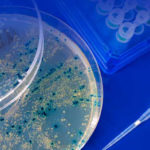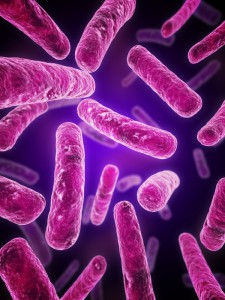Science touches our lives, daily. But far too many scientific concepts and terms are misunderstood and used incorrectly. Even those of us wearing a “scientist” badge sometimes misappropriate terms, which can act to reproduce the misuse.
A basic level of science literacy is so important for all of us. Why? So that when bombarded with comments about vaccination or climate change on a social media site, we are able to sift through the jargon, understand what’s correct and what is not correct, and make decision based in facts vs. internet gossip. With just a bit of knowledge of basic science terms, you are better protected against deception and you’ll know how to sort facts from fiction.
Here are a few general science terms that are commonly misunderstood and misused.
Hypothesis
Commonly misunderstood as a fancy word for a guess or an opinion. Everyone can have a hypothesis, right?
Not so fast, my friend. A hypothesis is actually a proposed explanation, a guess of sorts, about an observed phenomena, by a person trained/skilled in that area of scientific study.
A hypothesis can also be a suggested explanation for a relationship between observed phenomena. A hypothesis can be tested and proved or disproved, based on experimental evidence.
Scientists use hypotheses to guide their work. A scientist might learn that mice exposed to a certain bacteria develop antibodies to that bacteria. Additionally, the scientists might observe unexpected cells in fluid from the mice. This surprising development could be explained by a new hypothesis about the presence of these cells, and the new hypothesis then tested by further experiments.
Theory
Theories are commonly misunderstood as something dreamed up to explain a regularly observed phenomena. It’s important to know or recall, however, that eye witness testimony is remarkably unreliable. You may ‘observe’ something and completely misinterpret what you’ve seen. Or miss part of what occurred.
We commonly hear: “I have a theory about that” and “People are entitled to their own theories” or “All theories should be treated equally.”
We are all for equality. No doubt about that.
However, scientific theories are really well-reasoned explanations of facts. Theories are developed by experts who’ve conducted multiple, well-controlled experiments. Theories are developed after mining the data of tested hypotheses. Theories are substantiated vs. guesses, and not theoretical explanations. Theories are based on facts and agreed to by multiple experts in the particular area of study. We might think of Einstein’s theory of special relativity:
“Albert Einstein published the theory of special relativity in 1905, building on many theoretical results and empirical findings obtained by Albert A. Michelson, Hendrik Lorentz, Henri Poincaré and others. Max Planck, Hermann Minkowski and others did subsequent work.”
Note the substantial research and expertise that was part of this famous theory!
Error
Commonly misunderstood as undesirable experimental outcomes. You made a mistake and need to start over.
Whether you’re making a dress, doing an experiment, soldering metal or training dogs, errors occur. And when they occur, we attempt to incorporate the error into the project, or do our best to fix the error.
Errors can be where real creativity comes into play. Cut through a line of stitching while sewing and you might just stitch again over the cut line, maybe add a small piece of fabric to reinforce the cut. Fail to solder two pieces of metal together? You can fix that error by adding new solder and trying again. As a dog trainer I can tell you that training always results in errors, but you don’t get rid of the dog. There is always a way to fix a training error.
Errors in scientific studies are somewhat the same. They are common and expected. If your research has no errors, your sample size is too small or you’ve forgotten to include controls. Error values that are represented in scientific data graphs are simply the difference between each data point and the mean of all the data points. The mean value is calculated by adding up all the data point values and dividing that value by the number of data points. When data is plotted on a graph, error bars are included. The error bars represent how far from the mean value of that study each data point was.
Now let’s review a few public health-related science terms.
Organic
Many of us believe that the food labeled “organic” is higher quality than food not labeled “organic”. And there is serious and on-going scientific debate as to whether food labeled organic has higher nutritive value than nonorganic food.
By means of full disclosure, “organic” is a real toe-curler for me. The word organic means composed of carbon. According to Merriam-Webster.com organic is: “of, relating to, or containing carbon compounds”. This is the accepted definition in scientific circles. Or rather, was the accepted definition.
When I checked “organic” in Merriam Webster online, I admit that the definition above for organic was #2b. Definition #1 is:
“of, relating to, yielding, or involving the use of food produced with the use of feed or fertilizer of plant or animal origin without employment of chemically formulated fertilizers, growth stimulants, antibiotics, or pesticides.”
It’s definition #1 because it’s the most common, accepted use of organic today, in connection to food. Organic farming means that no chemically-derived herbicides or pesticides were used to grow plants, and animals raised as food were raised without growth stimulants or antibiotics, and were fed organic foods or raised on organic grasses.
Whether organic foods have superior nutritive value is an active area of investigation. But you are guaranteed to get less pesticide exposure from organic apples than from nonorganic apples.
Bacteria
Commonly misunderstood as evil, bacteria are thought of as “germs”; very tiny things that serve no purpose other than to make us sick.

The truth is that we’re learning more and more about the importance of bacteria inside our bodies! Our microbiome and gut microbiome are populations of thousands of kinds of bacteria that live together, helping us digest foods and releasing compounds, many of which are essential to good health.
A normal microbiome is believed to be transmitted to a newborn either when they pass through the birth canal, or during nursing. Our normal microbiome can be disrupted by antibiotic therapy, and can be augmented with bacteria-containing foods like yogurt and sauerkraut, among other foods. Eating too many processed foods and too much sugar, can also upset the balance of good and less good bacteria in our microbiomes.

There are now studies showing evidence in support of the theory that Parkinson’s disease can be tied to the lack of certain types of bacteria in the gut—the gut microbiome. This Pubmed search provides a list of researchers and studies examining gut microflora and neurological disease.
Bottom line: We are learning more and more about useful bacteria and their ability to protect us and should temper any dislike of ‘germs’ by staying as informed as possible. Read about probiotics, talk to a registered nutritionist or your personal health advisor frequently, to stay on top of this fast-moving area of scientific research.
Antibiotic
Commonly misunderstood as medicine to treat the common cold. Or a sinus infection.
Antibiotics are often naturally occurring substances/compounds. Penicillin was discovered when mold growing on a agar plate of bacteria was found to inhibit growth of the bacteria. Some antibiotics are now formulated in laboratories, although soil organisms have continued to be a source of new antibiotics.
What you need to know: Antibiotics are now under siege by bad bacteria…those we call pathogenic bacteria. These bad guys are the ones that cause pneumonia, tuberculosis and infections in deep wounds, cuts and dog or cat bites.
Bacterial pathogens have the ability to develop resistance to antibiotics, and we are in fact running out of antibiotics to treat certain infections. Tuberculosis is a very serious and transmissible lung infection in many parts of the world. The mycobacteria that cause tuberculosis are now resistant to 2 or 3 of the first-line anti-tuberculosis antibiotics.
Antibiotics work by killing bacteria, without harming our cells. Part of the reason that antibiotic-resistant bacteria are on the rise is that nonorganic animal producers, those that raise beef, pork, chicken and lamb for human consumption, commonly feed the animals antibiotics as growth stimulants, as part of their normal growth ration.
This is where you and I come in. We can help stop this dangerous practice by buying organic beef, pork, lamb or chicken, specifically raised without antibiotics. Know where your food comes from and encourage your state’s livestock producer organizations to educate about and stop the practice of feeding antibiotics to livestock animals.
Epidemic
Commonly misunderstood as a disease that is going to kill all of humanity. (That definition is only wrong because a disease that kills all of humanity, one that spreads continent to continent, would be a pandemic.)
What you need to know: According to the Centers for Disease Control (the CDC), an epidemic is “an increase, often sudden, in the number of cases of a disease above what is normally expected in that population in that area.” This could happen with a new strain of the flu or with something more devastating like Ebola virus.
Or with a supposedly eradicated disease like measles. This article on a 1988 measles outbreak in California, calls the outbreak an epidemic, noting: “During 1988 through 1990, California experienced its worst measles epidemic in more than a decade, with 16,400 reported cases, 3,390 hospital admissions, and 75 deaths. More than half of the patients were younger than 5 years; the highest incidence was among infants younger than 12 months. The epidemic centered in low-income Hispanic communities in southern and central California. The major cause of the epidemic was low immunization levels among preschool-aged children and young adults.”
The risk of epidemics is real. Measles, as recently as 2019, has reached epidemic levels, and with outbreaks in Europe, has potential for pandemic status. Measles is caused by a virus and can be safely prevented by routine vaccinations, for minimal cost.
The terms presented here are really just the tip of the iceberg. It is tough to stay on top of the developments in science, in particular the language and terminology. Here are a few tips that might help:
When you hear a news story involving science, read more from several sources. If you’re a public radio fan, you can also read the stories covered on npr, at npr.org. Compare what you read/hear there to coverage of the same story in The New York Times. Check out The Scientist magazine and Science magazine for firsthand coverage of science news. Nature online is another excellent source of trustworthy science news.
Start or participate in a science book club. There are so many interesting things to learn in many areas of science. You might invite an expert from a local school, community college or university to share their area of expertise.

If you are a scientists, what are you studying? Where do you see a need for better science literacy? We will happily share your suggestions here on how to empower us all to better handle the wealth of science information that affects our lives.
Let’s make 2020 the year we improve our science literacy—for us, our kids, our parents and our friends.
Related Posts
Kari Kenefick
Latest posts by Kari Kenefick (see all)
- Cell-Based Target Engagement and Functional Assays for NLRP3 Inhibitor Profiling Help Identify Successes and Failures - January 25, 2024
- Illuminating the Brain with a New Bioluminescence Imaging Substrate - April 13, 2023
- Made Just for You: Promega Custom Reagents - October 28, 2022
